Related Research Articles

Compost is a mixture of ingredients used as plant fertilizer and to improve soil's physical, chemical, and biological properties. It is commonly prepared by decomposing plant and food waste, recycling organic materials, and manure. The resulting mixture is rich in plant nutrients and beneficial organisms, such as bacteria, protozoa, nematodes, and fungi. Compost improves soil fertility in gardens, landscaping, horticulture, urban agriculture, and organic farming, reducing dependency on commercial chemical fertilizers. The benefits of compost include providing nutrients to crops as fertilizer, acting as a soil conditioner, increasing the humus or humic acid contents of the soil, and introducing beneficial microbes that help to suppress pathogens in the soil and reduce soil-borne diseases.
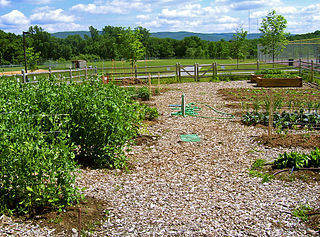
The following outline is provided as an overview of and topical guide to organic gardening and farming:

A legume is a plant in the family Fabaceae, or the fruit or seed of such a plant. When used as a dry grain, the seed is also called a pulse. Legumes are grown agriculturally, primarily for human consumption, for livestock forage and silage, and as soil-enhancing green manure. Well-known legumes include beans, soybeans, chickpeas, peanuts, lentils, lupins, grass peas, mesquite, carob, tamarind, alfalfa, and clover. Legumes produce a botanically unique type of fruit – a simple dry fruit that develops from a simple carpel and usually dehisces on two sides.
Vegan organicagriculture is the organic production of food and other crops with minimal animal inputs. Vegan organic agriculture is the organic form of animal-free agriculture.
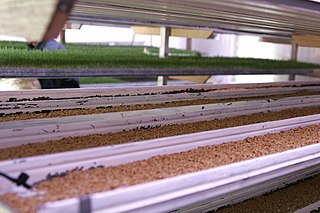
Fodder, also called provender, is any agricultural foodstuff used specifically to feed domesticated livestock, such as cattle, rabbits, sheep, horses, chickens and pigs. "Fodder" refers particularly to food given to the animals, rather than that which they forage for themselves. Fodder includes hay, straw, silage, compressed and pelleted feeds, oils and mixed rations, and sprouted grains and legumes. Most animal feed is from plants, but some manufacturers add ingredients to processed feeds that are of animal origin.

Organic horticulture is the science and art of growing fruits, vegetables, flowers, or ornamental plants by following the essential principles of organic agriculture in soil building and conservation, pest management, and heirloom variety preservation.

Corn stover consists of the leaves, stalks, and cobs of maize (corn) plants left in a field after harvest. Such stover makes up about half of the yield of a corn crop and is similar to straw from other cereal grasses; in Britain it is sometimes called corn straw. Corn stover is a very common agricultural product in areas of large amounts of corn production. As well as the non-grain part of harvested corn, the stover can also contain other weeds and grasses. Field corn and sweet corn, two different types of maize, have relatively similar corn stover.
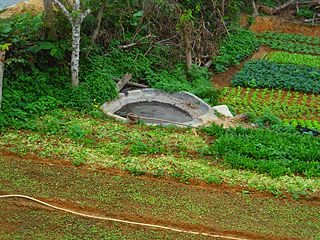
Organic fertilizers are fertilizers that are naturally produced. Fertilizers are materials that can be added to soil or plants, in order to provide nutrients and sustain growth. Typical organic fertilizers include all animal waste including meat processing waste, manure, slurry, and guano; plus plant based fertilizers such as compost; and biosolids. Inorganic "organic fertilizers" include minerals and ash. The organic-mess refers to the Principles of Organic Agriculture, which determines whether a fertilizer can be used for commercial organic agriculture, not whether the fertilizer consists of organic compounds.
Bone meal is a mixture of finely and coarsely ground animal bones and slaughter-house waste products. It is used as a dietary supplement to supply calcium and phosphorus to monogastric livestock in the form of hydroxyapatite. As a slow-release organic fertilizer, it supplies phosphorus, calcium, and a small amount of nitrogen to plants.
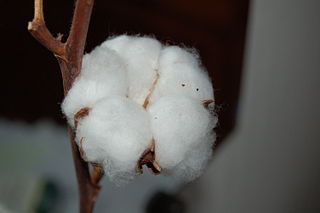
Cottonseed is the seed of the cotton plant.
Cottonseed meal is the byproduct remaining after cotton is ginned, the oil extracted, and the seeds crushed. Cottonseed meal is usually used for animal feed and in organic fertilizers.
Corn gluten meal is the principal protein of corn (maize) endosperm consisting mainly of zein and glutelin. It is a byproduct of corn processing that has historically been used as an animal feed. Despite the name, corn gluten does not contain true gluten, which is formed by the interaction of gliadin and glutenin proteins.
Feather meal is a byproduct of processing poultry; it is made from poultry feathers by partially grinding them under elevated heat and pressure, and then grinding and drying. Although total nitrogen levels are fairly high, the bioavailability of this nitrogen may be low. Feather meal is used in formulated animal feed and in organic fertilizer.
Animal-free agriculture, also known as veganic agriculture, stockfree farming or veganic farming, consists of farming methods that do not use animals or animal products.

Meat and bone meal (MBM) is a product of the rendering industry. It is typically about 48–52% protein, 33–35% ash, 8–12% fat, and 4–7% water. It is primarily used in the formulation of animal feed to improve the amino acid profile of the feed. Feeding of MBM to cattle is thought to have been responsible for the spread of BSE ; therefore, in most parts of the world, MBM is no longer allowed in feed for ruminant animals. However, it is still used to feed monogastric animals.

Manure is organic matter that is used as organic fertilizer in agriculture. Most manure consists of animal feces; other sources include compost and green manure. Manures contribute to the fertility of soil by adding organic matter and nutrients, such as nitrogen, that are utilised by bacteria, fungi and other organisms in the soil. Higher organisms then feed on the fungi and bacteria in a chain of life that comprises the soil food web.

Poultry feed is food for farm poultry, including chickens, ducks, geese and other domestic birds.

Reuse of human excreta is the safe, beneficial use of treated human excreta after applying suitable treatment steps and risk management approaches that are customized for the intended reuse application. Beneficial uses of the treated excreta may focus on using the plant-available nutrients that are contained in the treated excreta. They may also make use of the organic matter and energy contained in the excreta. To a lesser extent, reuse of the excreta's water content might also take place, although this is better known as water reclamation from municipal wastewater. The intended reuse applications for the nutrient content may include: soil conditioner or fertilizer in agriculture or horticultural activities. Other reuse applications, which focus more on the organic matter content of the excreta, include use as a fuel source or as an energy source in the form of biogas.
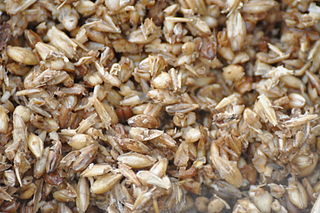
Brewer's spent grain (BSG) or draff is a food waste that is a byproduct of the brewing industry that makes up 85 percent of brewing waste. BSG is obtained as a mostly solid residue after wort production in the brewing process. The product is initially wet, with a short shelf-life, but can be dried and processed in various ways to preserve it.
Mustard cake is the residue obtained after extraction of oil from mustard, which is used as organic fertilizer. Mustard cake powder is excellent organic fertilizer containing food ingredients and even catalysts for herbaceous plants. Mustard cake are very useful as feed for the livestock and cattle.
References
- ↑ Henry, William Arnon; Morrison, Frank Barron (1915). Feeds and feeding: a hand-book for the student and stockman. Henry-Morrison. p. 184.
- ↑ King'ori, AM; Tuitoek, JK; Muiruri, HK (1998). "Comparison of fermented dried blood meal and cooked dried blood meal as protein supplements for growing pigs". Tropical Animal Health and Production. 30 (3): 191–6. doi:10.1023/a:1005015804804. PMID 9719848. S2CID 28241258.
- ↑ "Using Blood Meal To Improve Your Garden Soil".
- ↑ "University of Illinois Extension". Composting For The Home Owner. Retrieved 2 September 2016.
- ↑ Bradley, Fern Marshall; Ellis, Barbara W. (1997). Review: Rodale's All-New Encyclopedia of Organic Gardening: The Indispensable Resource for Every Gardener. Rodale Press. p. 11. ISBN 978-0-87596-743-1.
- ↑ Poisson, Leandre; Vogel Poisson, Gretchen (1994). Solar gardening: growing vegetables year-round the American intensive way . Chelsea Green Publishing. p. 103. ISBN 978-0-930031-69-5.
- ↑ Heuzé V., Tran G., 2016. Blood meal. Feedipedia, a programme by INRA, CIRAD, AFZ and FAO. https://www.feedipedia.org/node/221 Last updated on March 31, 2016, 10:31